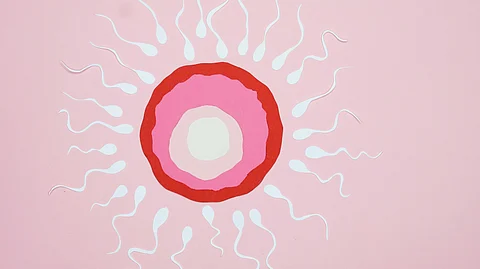“By adding eggs at later time points, we could test the system to see whether suLeX increased the longevity of the sperm. Essentially, we found we can maintain or extend fertilization rates over time, increasing the window of successful IVF,” Miller said.
At 0 hours, IVF efficiency (fertilized zygotes vs. total number of eggs) was significantly greater with sperm that were initially attached to suLeX (at 53%) than a control with no oviduct compounds (36%) and two alternative “control” compounds (about 40% each).
The time delays decreased fertilization rates for all groups, but less so for suLeX. In the control group with no oviduct glycans, fertilization was down to 1% at the 24-hour time point. But with suLeX, 12% of the eggs were fertilized after 24 hours.
The IVF setup with suLeX droplets also allowed the researchers to wash away free-swimming sperm before introducing eggs.
“Because the sperm were bound securely to the glycan compound, we could reduce the overall number of sperm, which meant fewer cases where more than one sperm fertilized the eggs,” Miller said.
The foundational study could one day improve IVF success for both animals and humans.
“There are companies, especially related to dairy cattle, that use IVF to produce and sell high-genetic-merit embryos that, after they are delivered, will produce milk more efficiently,” Miller said. “This technology could potentially help produce meat and milk more efficiently.”
He added that the specific glycans that bind human sperm have not yet been identified, but once that happens, glycan-IVF could help with timing mismatches between egg maturity at harvest and sperm viability in humans.
“Both eggs and sperm have to undergo a maturation phase before they’re ready for fertilization, so the timing is critical. There's variability in the time it takes sperm to complete their final major maturation step,” Miller said. “We think glycan-IVF could lengthen the fertile window of sperm and possibly increase IVF rates, though we need further testing to verify that.”
(Newswise/MFA)


